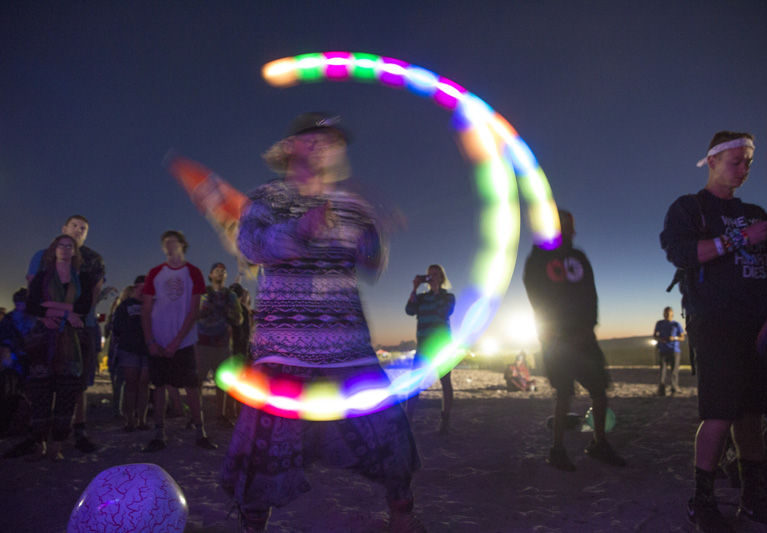
It was a sell-out before it even started, 30,000 three-day passes that started at $279 and went up to $17,500 for VIPs.
By the time the 800 acres of Central Florida ranchland cleared out on Monday, spewing exhausted throngs into an hours-long traffic jam, hopes were high that the first-ever Okeechobee Music and Arts Festival was bound to happen again.
It was that good.
The festival it has most often been compared to, Bonnaroo, can now be safely called the South’s “other” music marathon, which similarly transforms a tiny patch of Tennessee at the start of every summer since 2002. Bonnaroo draws 80,000; with one of Okeechobee’s founders an important producer there, it provided a blueprint for the Florida festival’s add-ons: yoga, art galleries, meditation and massage.
For the crowd of almost exclusively 20-somethings – our photographer spotted a lone man who appeared over 65, and another half-dozen over 40 – it was a theme park of premium-grade fun. The acres of campsites that included space for a car were a good stroll away from three main stages, encircled by oak hammocks. Strung from those oaks, and about everything else, were hammocks to lie on, and they stayed up all weekend for random napping.
The offerings of several dozen food trucks drew high praise for everything from barbecue and coffee to vegetarian food. The man-made beach had a full-size Ferris wheel, and art works were set up throughout the grounds, with a scattering of chairs from which to rest and contemplate.
And just beyond the stages in a woodsy area, a “tea lounge” decorated in 1950s lamps and tables allowed another chance to pause and refresh.
Everywhere, there was a pervasive sense of festival camaraderie. With abundant sunshine during the day and camping weather at night, 72-hour friendships were cemented over boxed wine, the beverage of choice and broadly shared. The official costume, for the women at least, was a hand-decorated tutu and bikini top (late in the game, a few tops came off in another festival tradition, the shoulder-surf). The de rigueur festival accessory was a totem – a pole rigged with an LED-lit image like a cloud or a smiley face, to illuminate the audience while the bands play.
There were $7 hot showers – water pressure got a solid B-plus! – and portalets aplenty, purged and restocked every morning though they took a pounding by the end of a beer-fueled evening and it took sensory obliteration to make it through a late-night use.
Nor did the noise abate at bedtime. A fourth stage near the beach area continued until dawn, to the degree that campers sleeping on thin mattresses could feel the ground vibrating beneath them.
Shuttles brought travelers from airports in Orlando and West Palm to the festival spot 10 miles north of the town of Okeechobee. Rickshaws moved them once they got there.
And before anyone went anywhere, a staff of 300 pummeled college campuses promoting the fest as a spring break destination. A planning staff of 100 worked a year to make the festival happen, and another 3,000 volunteers, vendors and security staff kept it up and running.
Festivals aren’t a sure bet, though plenty give it a shot – there are 800 annually in the U.S., and in Florida they have mostly flopped.
At the root of Okeechobee’s success was, of course, the music. Kendrick Lamar, Skrillex, Mumford and Sons, Preservation Hall Jazz Band, Hall and Oates, the Meters, the Avett Brothers, Jason Isbell and Soulive drew raves from Tampa Bay Times pop music critic Jay Cridlin, who chronicled the event practically beat by beat.
Cridlin wrapped up his final review by throwing down the gauntlet: “There’s your first testimonial, Okeechobee. Start printing those 2017 flyers now.”



